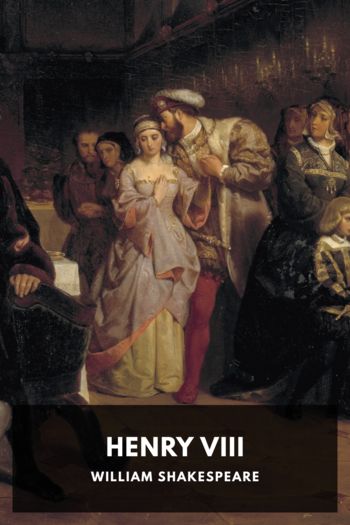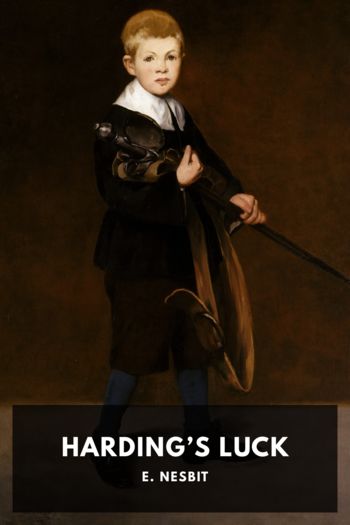The Enchanted Castle by E. Nesbit (online e book reading .TXT) 📕

Description
The Enchanted Castle is a novel for young readers by Edith Nesbit, who was writing in the late Victorian and early Edwardian era in Britain. As in her other children’s books, it begins in the everyday world but quickly brings in the fantastical and magical. A large part of the delight of Nesbit’s books is that her children behave in quite ordinary ways, getting into scrapes, getting dirty and their clothes torn, making decisions which seem right to them at the time but which are generally wrong-headed. It’s the contrast between the ordinariness of the children and the magical adventures they become involved in which makes the books so charming.
The Enchanted Castle was originally serialized in The Strand Magazine alongside stories by Rudyard Kipling and Arthur Conan Doyle. The first book edition was published in 1907.
In the story, Kathleen and her brothers Gerald and Jimmy find a way into a remarkable garden designed to create a Palladian landscape, full of statues and pseudo-Classical temples and buildings. It is not long before they come across a sleeping Princess. They wake her, and she introduces them to an item of real magical value, a ring which makes its wearer invisible. But once on, the ring won’t come off! “Those of my readers who have gone about much with an invisible companion will not need to be told how awkward the whole business is,” comments the author, which is indicative of the simple and direct language she uses, and the humor of the books. Even the invisibility ring, however, is not quite as simple as it seems; and many interesting and amusing adventures follow.
Read free book «The Enchanted Castle by E. Nesbit (online e book reading .TXT) 📕» - read online or download for free at americanlibrarybooks.com
- Author: E. Nesbit
Read book online «The Enchanted Castle by E. Nesbit (online e book reading .TXT) 📕». Author - E. Nesbit
Many other pictures there were that these arches framed. And all showed some moment when life had sprung to fire and flower—the best that the soul of man could ask or man’s destiny grant. And the really good hotel had its place here too, because there are some souls that ask no higher thing of life than “a really good hotel.”
“Oh, I am glad we came; I am, I am!” Kathleen murmured, and held fast to her brother’s hand.
They went slowly up the hall, the ineffectual bull’s-eye, held by Jimmy, very crooked indeed, showing almost as a shadow in this big, glorious light.
And then, when the hall’s end was almost reached, the children saw where the light came from. It glowed and spread itself from one place, and in that place stood the one statue that Mabel “did not know where to find”—the statue of Psyche. They went on, slowly, quite happy, quite bewildered. And when they came close to Psyche they saw that on her raised hand the ring showed dark.
Gerald let go Kathleen’s hand, put his foot on the pediment, his knee on the pedestal. He stood up, dark and human, beside the white girl with the butterfly wings.
“I do hope you don’t mind,” he said, and drew the ring off very gently. Then, as he dropped to the ground, “Not here,” he said. “I don’t know why, but not here.”
And they all passed behind the white Psyche, and once more the bicycle lamp seemed suddenly to come to life again as Gerald held it in front of him, to be the pioneer in the dark passage that led from the Hall of ⸻, but they did not know, then, what it was the Hall of.
Then, as the twisting passage shut in on them with a darkness that pressed close against the little light of the bicycle lamp, Kathleen said, “Give me the ring. I know exactly what to say.”
Gerald gave it with not extreme readiness.
“I wish,” said Kathleen slowly, “that no one at home may know that we’ve been out tonight, and I wish we were safe in our own beds, undressed, and in our nightgowns, and asleep.”
And the next thing any of them knew, it was good, strong, ordinary daylight—not just sunrise, but the kind of daylight you are used to being called in, and all were in their own beds. Kathleen had framed the wish most sensibly. The only mistake had been in saying “in our own beds” because, of course, Mabel’s own bed was at Yalding Towers, and to this day Mabel’s drab-haired aunt cannot understand how Mabel, who was staying the night with that child in the town she was so taken up with, hadn’t come home at eleven, when the aunt locked up, and yet she was in her bed in the morning. For though not a clever woman, she was not stupid enough to be able to believe any one of the eleven fancy explanations which the distracted Mabel offered in the course of the morning. The first (which makes twelve) of these explanations was the truth, and of course the aunt was far too clever to believe that!
XIIt was show-day at Yalding Castle, and it seemed good to the children to go and visit Mabel, and, as Gerald put it, to mingle unsuspected with the crowd; to gloat over all the things which they knew and which the crowd didn’t know about the castle and the sliding panels, the magic ring and the statues that came alive. Perhaps one of the pleasantest things about magic happenings is the feeling which they give you of knowing what other people not only don’t know but wouldn’t, so to speak, believe if they did.
On the white road outside the gates of the castle was a dark spattering of breaks and wagonettes and dogcarts. Three or four waiting motorcars puffed fatly where they stood, and bicycles sprawled in heaps along the grassy hollow by the red brick wall. And the people who had been brought to the castle by the breaks and wagonettes, and dogcarts and bicycles and motors, as well as those who had walked there on their own unaided feet, were scattered about the grounds, or being shown over those parts of the castle which were, on this one day of the week, thrown open to visitors.
There were more visitors than usual today because it had somehow been whispered about that Lord Yalding was down, and that the holland covers were to be taken off the state furniture so that a rich American who wished to rent the castle, to live in, might see the place in all its glory.
It certainly did look very splendid. The embroidered satin, gilded leather and tapestry of the chairs, which had been hidden by brown holland, gave to the rooms a pleasant air of being lived in. There were flowering plants and pots of roses here and there on tables or window-ledges. Mabel’s aunt prided herself on her tasteful touch in the home, and had studied the arrangement of flowers in a series of articles in Home Drivel called “How to Make Home High-class on Ninepence a Week.”
The great crystal chandeliers, released from the bags that at ordinary times shrouded them, gleamed with grey and purple splendour. The brown linen sheets had been taken off the state beds, and the red ropes that usually kept the low crowd in its proper place had been rolled up and hidden away.
“It’s exactly as if we were





Comments (0)